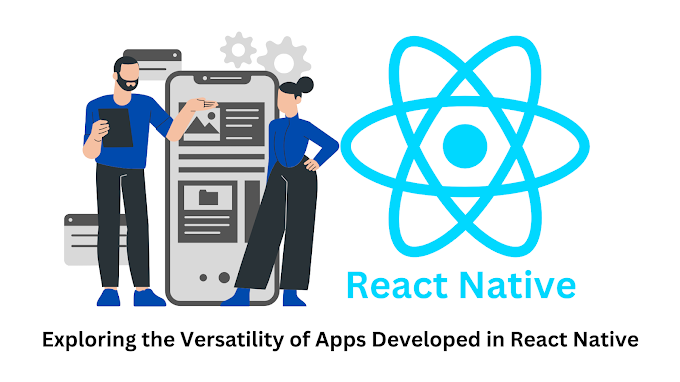Introduction
1. The Genesis of React.js
- 1.1 The Facebook Connection
In the early 2010s, Facebook was experiencing a problem that many web applications faced - managing and updating a complex and dynamic user interface efficiently. Traditional methods of updating the Document Object Model (DOM) led to performance bottlenecks and made it challenging to maintain a smooth user experience. React.js was born out of the need to address these challenges.
At Facebook, a team led by Jordan Walke began developing an internal solution that would later become React. Their goal was to create a library that could handle the dynamic and data-driven nature of Facebook's user interface. This internal project laid the foundation for React's development.
- 1.2 Birth of React
React.js was officially introduced to the public in 2013. It was initially released as an open-source project, making it accessible to developers worldwide. One of the defining features of React was its unique approach to building user interfaces through a component-based architecture. This innovative concept allowed developers to create reusable, modular UI components, which significantly simplified the development process.
- 1.3 The Open Source Journey
One of the pivotal moments in React's history was Facebook's decision to open-source the library. By doing so, Facebook encouraged collaboration and contributions from developers worldwide. React transitioned from being an in-house solution to a community-driven project. This shift towards openness and collaboration played a significant role in React's rapid growth and adoption.
2. The Development Philosophy of React.js
- 2.1 Component-Based Architecture
React's core philosophy is centered around the concept of components. In React, everything is a component - from a simple button to a complex data visualization chart. Components are self-contained, reusable building blocks of a user interface. This approach simplifies UI design and promotes code reusability, making it easier to manage large and complex applications.
- 2.2 Virtual DOM
React introduced the concept of the Virtual DOM, a lightweight, in-memory representation of the actual DOM. When changes occur in a React application, they are first reflected in the Virtual DOM. React then intelligently calculates the minimal number of changes required to update the actual DOM. This approach minimizes direct manipulation of the DOM, which can be slow, and results in significant performance gains.
- 2.3 Unidirectional Data Flow
React enforces a unidirectional data flow, meaning that data in a React application flows in one direction - from parent components to child components. This unidirectional flow simplifies state management and debugging. It also improves predictability, as changes to data can be tracked more easily.
3. React's Impact on Web Development
- 3.1 The Rise of Single-Page Applications (SPAs)
React played a significant role in popularizing the concept of Single-Page Applications (SPAs). SPAs load a single HTML page and dynamically update content as the user interacts with the application. React's Virtual DOM and efficient rendering make it well-suited for building SPAs, leading to their widespread adoption.
- 3.2 The React Ecosystem
React's ecosystem has expanded beyond web development. React Native, for example, enables the development of mobile applications using React's component-based approach. Server-side rendering (SSR) with libraries like Next.js has also become a common practice, improving web application performance and SEO.
- 3.3 Influential Companies and Projects
React's success is reflected in the number of companies and projects that have adopted it. Large organizations like Airbnb, Netflix, and Instagram use React for their web and mobile applications. Open-source projects like Gatsby and Material-UI leverage React to provide powerful tools and UI components to the developer community.
4. React vs. Competing Technologies
- 4.1 React vs. Angular
Comparing React with Angular, another popular front-end framework, reveals key differences. While Angular provides a comprehensive solution with a robust set of features, React focuses on the view layer, giving developers more flexibility to choose additional libraries and tools. React's component-based approach differs from Angular's more opinionated structure.
- 4.2 React vs. Vue.js
Vue.js shares similarities with React, such as a component-based architecture, but also has distinct features. React has a larger community and is often favored for larger applications, while Vue.js is known for its simplicity and ease of integration into existing projects. Developers often choose between them based on specific project requirements and personal preferences.
5. The React Community
- 5.1 Growth and Diversity
The React developer community has grown exponentially since its inception. The library's popularity has transcended borders and led to a diverse group of developers from around the world contributing to its success. This diversity has enriched the React ecosystem with a wide range of perspectives and experiences.
- 5.2 Learning Resources
Aspiring React developers have access to a plethora of learning resources. Online communities like Stack Overflow and Reddit provide forums for asking questions and sharing knowledge. Tutorials, courses, and documentation abound, making it easier than ever to learn React and stay updated with best practices.
6. The Future of React.js
- 6.1 React's Ongoing Development
React's development team is committed to keeping the library relevant and responsive to changing web development needs. This includes addressing performance bottlenecks, introducing new features, and ensuring backward compatibility. The roadmap for React includes exciting possibilities like concurrent mode and improved server rendering.
- 6.2 Web Components and Beyond
React's compatibility with web components opens up new avenues for integration with other technologies. Web components allow for the creation of reusable UI elements that can be used across different web frameworks. React continues to play a pivotal role in shaping the future of web development.
7. Conclusion
React.js, born out of the challenges faced by Facebook in managing complex user interfaces, has become a cornerstone of modern web development. Its component-based architecture, Virtual DOM, and unidirectional data flow have influenced how developers build web applications. React's impact extends beyond the web, with React Native and server-side rendering broadening its applicability.
As React continues to evolve, it remains an exciting and dynamic force in the world of front-end development, shaping the web applications of tomorrow. Its open-source nature, robust community, and commitment to performance make it a formidable choice for developers worldwide. Understanding React's history, philosophy, and impact provides valuable insights into the evolution of web development in the 21st century.












0 Comments